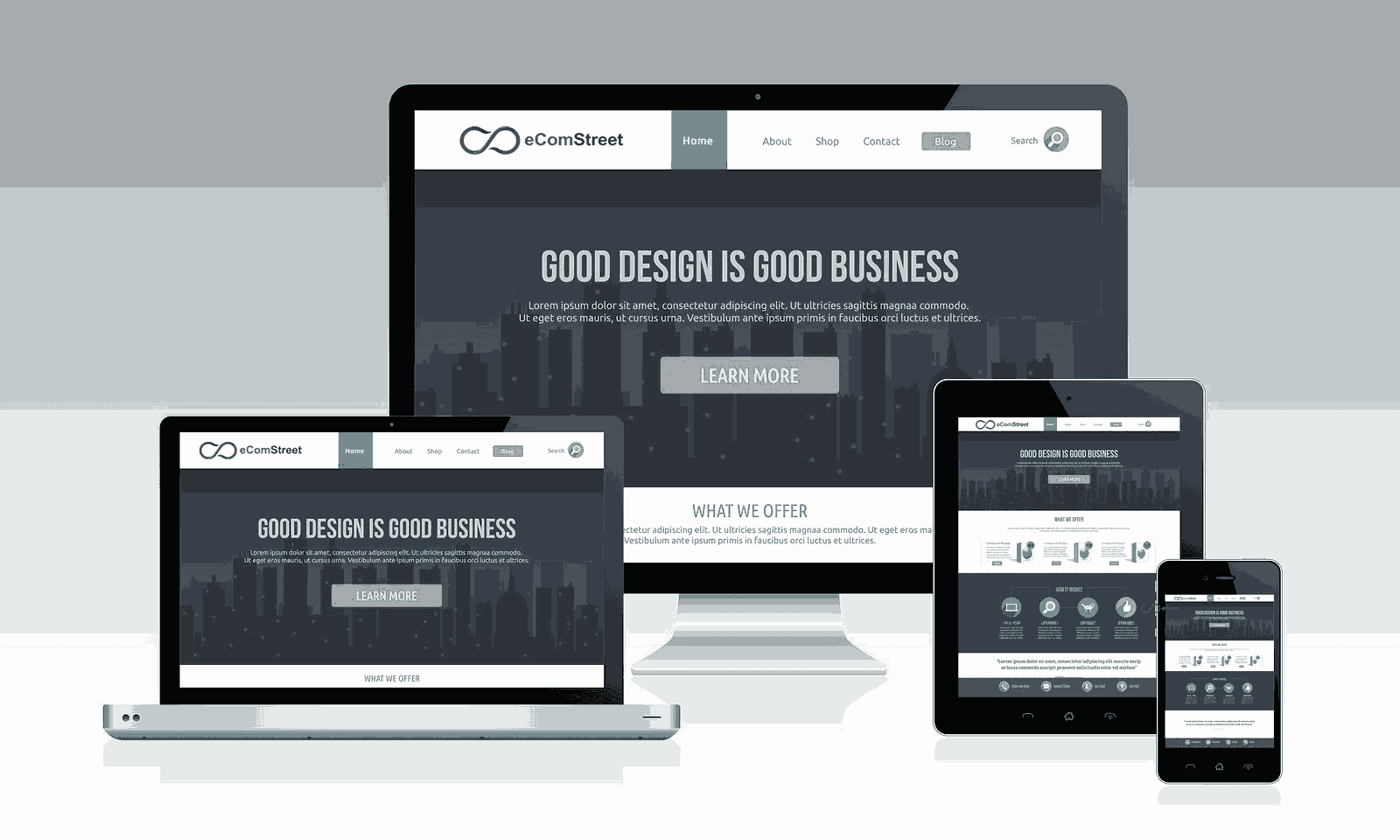
The process of creating a successful website takes time and money. It is important to have the right information and tools available in order to make a website great. Here are seven steps to help you create a website that will attract visitors and boost your business.
First, define your goals. A good website is one that supports your business's purpose, goals and mission. You should also consider what you want to achieve with your site, such as increasing your profits or building a community. Also, a website that is well-designed and intuitive should be easy to use. You can achieve this with a clear message and an organized outline.
Next, pick a domain. Your domain is the home of your website. It's also where the rest of the internet can find you. It is important that you choose a domain name that is both memorable and logical for the business.

Once you've settled on your domain name, you should decide on a hosting provider. A template can be used to speed up your design process. Templates help maintain consistency on your website. You should also check for mobile devices and links.
Also, consider search engine visibility before you begin a project. Analytics such as Google Analytics can be used to measure site performance. Analytics can reveal if your website's structure and design are optimal. You can also check how your website performs over time, which can help you understand how your site changes. You can also use data to improve your website, such a copywriting or marketing strategy.
Your new website should have a marketing plan. You have many options for promoting your website. A great marketing plan will include strategies to drive traffic and build community. Your website should be updated and added to frequently. This is a good way to keep the site current and relevant for your audience.
You should also consider your brand tone. You can achieve this by using colors, typography, and images. Your website will feel more calm and inviting if there is whitespace between elements. Also, use different sizes to highlight important elements on your website.

Lastly, you should consider your target audience. There are more than 1.8 billion websites available online. Make sure your site stands out among the rest. You can achieve this by using keywords within your content. You can also use heat mapping to learn more about how your website is performing. You can also use a tool like Adobe Analytics to learn more about your visitors and their behavior on your site.
While updating your website, it's a good idea to learn about your audience. You can then use this information for your website improvement. This can be done by creating alerts and reports. To see the performance of your competitors, you can also check out their websites.
FAQ
What is responsive web design?
Responsive Web Design, also known as RWD, is a way of designing websites so that content displays on all devices. This includes desktop computers, tablets (tablets), smartphones, etc. This allows users to simultaneously view a website from one device while still being able to access other features, such as navigation menus and buttons. The goal of RWD is to ensure that when a user views a site on any screen size, they view the exact version of the site.
For example, if you were building a website for a company whose products sell primarily through eCommerce, you would want to ensure that even if a customer viewed your website on a smartphone, they could easily purchase items from your store.
A responsive site will automatically adjust its layout based on the device being used to view it. The site will display exactly the same way on a laptop as if it were viewed on a desktop computer. However, if you're viewing the page on your phone, it will display differently.
This allows you create a website that looks great on any device.
What is a static website?
A static site is one that stores all content on a server. Visitors can access the website via web browsers.
The term "static", refers to the absence or modification of images, video, animations, and so forth.
This site was originally designed for intranets. However, it has been adopted by small businesses and individuals who need simple websites with no custom programming.
Static websites are becoming more popular due to their ease of maintenance. It's easier to update and maintain static sites than a website that has many components (such blogs).
They load also faster than their dynamic counterparts. This makes them ideal for users on mobile devices or those with slow Internet connections.
A static website is more secure than its dynamic counterparts. A static website is impossible to hack. Hackers only have access to the data that resides inside a database.
There are two main ways you can create a static web site.
-
Use a Content Management System (CMS).
-
How to create a static HTML website
It all depends on what you need. I recommend a CMS if you're just starting to create websites.
Why? Because it gives you complete control of your website. You don't even need to hire someone for help setting up your CMS. All you need to do is upload files to the web server.
You can still learn how to code and create a static website. However, you will need to put in some time to learn how to program.
Can I use a template or framework on my website?
Yes! Many people use pre-built templates or frameworks when creating a website. These templates contain all the code that is required to display information.
The following are some of our most-recommended templates:
WordPress – One of the most well-known CMSes
Joomla - another popular open source CMS
Drupal - An enterprise-level solution for large companies
Expression Engine - a proprietary CMS from Yahoo
Each platform has hundreds of templates, so it should not be hard to find the one that you like.
Statistics
- In fact, according to Color Matters, a signature color can boost brand recognition by 80%. There's a lot of psychology behind people's perception of color, so it's important to understand how it's used with your industry. (websitebuilderexpert.com)
- Is your web design optimized for mobile? Over 50% of internet users browse websites using a mobile device. (wix.com)
- Did you know videos can boost organic search traffic to your website by 157%? (wix.com)
- Studies show that 77% of satisfied customers will recommend your business or service to a friend after having a positive experience. (wix.com)
- It enables you to sell your music directly on your website and keep 100% of the profits. (wix.com)
External Links
How To
What is website hosting?
Website hosting is the location where people go when they visit websites. There are two types:
-
Shared hosting - This is the cheapest option. Your website files are stored on a server that is owned by another person. Your customers' requests travel via the Internet to your server when they visit your site. The server owner then forwards the request to you.
-
Dedicated hosting – This is the most expensive option. Your website resides entirely on one server. Your traffic stays private as no other websites can share the same server.
Shared hosting is preferred by most businesses because it's cheaper than dedicated hosting. With shared hosting, the company that owns the server provides the resources needed to run your website.
Both options have their pros and cons. Here are the differences:
Pros of Shared Hosting
-
Lower Cost
-
Easy To Set Up
-
Regular Updates
-
It is possible to find it on many web hosting companies
Shared hosting can often cost as little as $10/month. However, this price typically includes bandwidth. Bandwidth describes the amount of data that can be transferred over the Internet. Even if you are only uploading photos to your blog site, high data transfer rates can still cost you extra.
You will quickly see why you paid so much for your former host once you have started. Most shared hosts provide very limited customer support. You'll be on your way after they walk you through setting it up.
It is important to find a provider that provides 24-hour support. They'll take care of any issues that come up while you sleep.
Dedicated Hosting Cons:
-
More Expensive
-
Less common
-
Specific Skills Required
You're getting everything you need with dedicated hosting to operate your website. You won't worry about how much bandwidth you are using or how much RAM (random Access Memory) you have.
This means you'll have to spend more upfront. However, once your business goes online, you'll discover that you don’t need as much technical support. You'll soon be an expert at managing servers.
Which Is Better For My Business, So Which Is Better?
This depends on the kind of website that you want. If you only want to sell products, then shared hosting might be the best choice. It is easy to set-up and manage. And since you're sharing a server with many other sites, you'll likely receive frequent updates.
If you are looking to create a community around your brand, dedicated hosting is the best option. You can focus on building your brand without worrying about handling your traffic.
Bluehost.com offers both. Bluehost.com offers unlimited monthly data transfers, 24/7 customer support, domain registrations free of charge, and a 30-day guarantee for your money back.